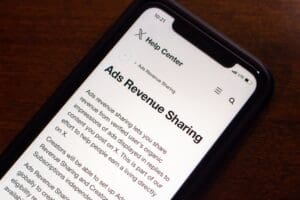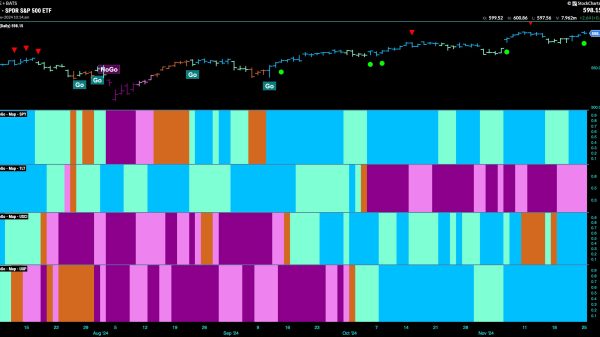Online advertising can be costly and scalable, but ensuring that ad spending is protected and effective is a major challenge, with significant resources lost to malicious third parties.
With the vast amount of money spent on digital ads, brands face the challenge of protecting their ad budgets from being wasted on incorrect placements or fraudulent activities.
On a bright note, digital advertising offers incredible opportunities for businesses of all sizes, especially smaller ones looking to make a name for themselves. With precise targeting and analytics, even small companies can reach their target audience with technical proficiency. This level playing field allows emerging brands to compete with bigger players, building their reputation and expanding their customer base effectively.
To welcome the benefits and sidestep the drawbacks, this article explores the importance of ad verification and how data collection methods like data scraping can help verify ad display while helping avoid fraudulent publishers, ensuring that your advertising dollars are well spent. Information collection is vital for battling ad fraudsters, as it helps verify ad placements, ensure that ads reach the intended audience, and detect any suspicious activity. Automatable data scraping processes make these tasks more efficient by quickly gathering and analyzing large volumes of data, allowing businesses to respond swiftly to potential threats and optimize their ad strategies. So, without further delay, let’s take a closer look at how companies protect their ad spending with clever ad placement and verification.
What is Ad Verification
Ad verification is a process used in digital advertising to ensure that ads occupy the desired digital real estate and meet specific standards. Making sure ads show up in the right places and follow compliance standards is really important. If ads end up in the wrong spots or don’t meet the necessary guidelines, it can hurt a brand’s reputation and lead to wasted resources. Ad verification tools track where ads are shown and confirm they meet industry regulations. They detect fraudulent activities and provide real-time reporting to help advertisers make informed decisions. Here are the most common ad fraud techniques monitored by ad verification tools:
Click Fraud: This is when fake clicks are generated on ads, often using automated bots or groups of people, to make it look like an ad is getting lots of attention. This drains advertisers’ budgets without actually reaching real customers.
Domain Spoofing: Domain spoofing masks low-quality or fake websites as high-quality sites worthy to be publishers. Mislead advertisers might invest more resources to get more exposure while getting nothing in return.
Ad Stacking: This happens when multiple ads are layered on top of each other in a single ad placement, with only the top ad being visible. Advertisers are charged for impressions on all the ads, even though only one is seen by users.
By leveraging ad verification technologies, businesses can maintain the integrity of their advertising campaigns and protect their investments. The most common issues to look out for include ads being shown on inappropriate websites or not being visible to the intended audience. Fortunately, preventive measures protect brand safety and maximize return on investment (ROI) by ensuring that ads reach the desired customer base in the right context.
Utilizing Web Data for Ad Verification
To make sure their ads are shown in the right places, brands use different methods to track where and how their ads appear. They often rely on tools like tracking pixels and verification software to keep an eye on ad placements and ensure everything is running smoothly.
A tracking pixel is a small piece of code embedded in a webpage or email that collects data about user interactions, helping advertisers understand how their ads are performing. Verification software provides real-time insights into ad placements, allowing brands to quickly identify and address any issues. Real-time data is essential for spotting discrepancies and ensuring that ads are displayed as intended.
Meanwhile, data scraping tools and verification software monitor ad performance metrics, such as click-through rates (CTR), conversion rates, and bounce rates. A high CTR combined with a strong conversion rate suggests that real users are engaging with the ads and taking desired actions. Meanwhile, a low bounce rate indicates that users are finding the content relevant and are staying on the site longer, which is a good sign of genuine interest.
Ensuring Ad Accuracy and Brand Safety
One of the main goals of ad verification is to make sure ads appear in the right places and contexts. These processes can involve data scraping with proxy server connections to test all locales and spot any discrepancies, like ads showing up on irrelevant or inappropriate websites.
By meticulously tracking ad placements, brands can ensure their advertisements reach the intended audience and convey the desired message. This involves using advanced ad verification tools to analyze ad delivery data and confirm that ads are displayed on appropriate websites that align with the brand’s values and target demographics.
For instance, these tools can detect and prevent ads from appearing on sites that do not meet brand safety standards, ensuring that the brand’s reputation is protected. Many brands have successfully used ad verification along with data scraping to ensure their ads are displayed correctly, leading to better ad performance and enhanced brand safety.
Summary
Digital advertising offers great opportunities for businesses, but it also comes with challenges like ad fraud and wasted ad spending. Ad verification, using tools like tracking pixels and data scraping, helps ensure ads appear in the right places and meet industry standards, protecting brand reputation and investment. By analyzing performance metrics, brands can confirm their ads reach the right audience, maximizing ROI and enhancing brand safety.
Read more:
How to Protect Marketing Spend with Ad Verification























